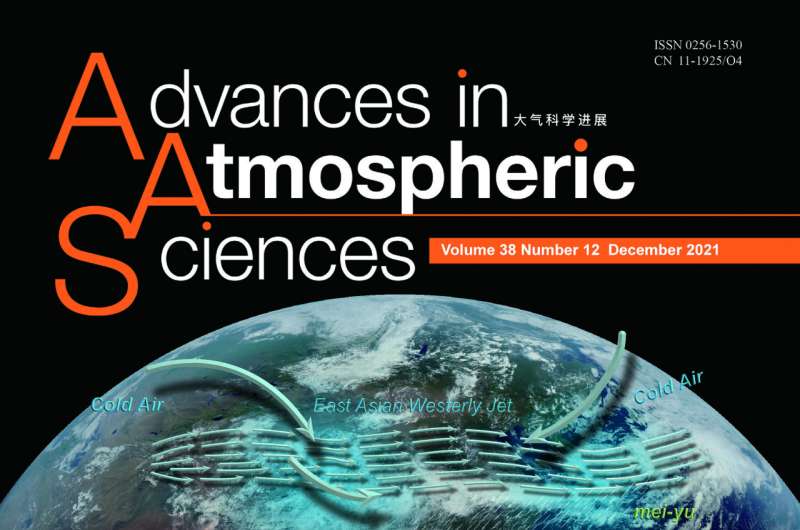Record-breaking rainfall in Asia prompts special curated journal issue

With impacts of climate change like the extreme heatwaves in Canada and Italy and the severe floods in Europe and China, 2021 has been a year of new records and fear for the future. For large parts of eastern Asia, however, the previous summer was one that locals won't forget for many, many years. For vast parts of the region, it was the wettest summer for almost 60 years, with widespread flooding in several provinces of China, but also in southern Japan and South Korea. With model projections heralding an approaching world of multiple extremes as climate change begins to bite, the need to understand and predict such events has become ever more pressing and essential in order to mitigate their worst impacts and save lives in coming decades.
As part of this effort, Springer Nature's peer-reviewed journal Advances in Atmospheric Sciences invited scientists from several countries, including China, the U.K., South Korea, the U.S. and Japan to come together in October 2020 to encourage scientists to research and submit their findings on the East Asian flooding of 2020 to a special issue dedicated to the event.
Dr. Robin Clark from the U.K."s national weather agency, one of the co-organizers of the special issue and co-author of the preface, says, "Climate change knows no borders and will impact everyone. We're already seeing its fingerprints on the extreme weather around the world, so it's important for countries to work together to avoid the very worst impacts of climate change."
A key aspect of the summer, highlighted by contributions to journal, was extremely unusual behavior of an anti-cyclone usually present in the sub-tropical west Pacific. Professor Jianhua Sun from China's Institute of Atmospheric Physics, one of the co-organizers of the special issue, says, "The anticyclone is a feature in every year, but in summer 2020, the periodic evolution of the western Pacific subtropical high is a key atmospheric circulation factor that led to the persistent extreme Meiyu season in 2020." Many of the scientists writing in the journal attributed this behavior to the Indian Ocean which was much warmer than normal.
A surprising thing about the 2020 summer was that it wasn't preceded by a major El Niño, the classic warming in the east Pacific which usually precedes the wettest summers in eastern Asia. However, as a paper led by Dr. Congxi Fang, of the Chinese Academy of Sciences points out, there was a warming further west, in the central Pacific, which rapidly cooled, which looks to have worked in tandem with the influence of the Indian Ocean on the behavior of the west Pacific anticyclone.
Seasonal prediction models appeared to have grasped the underlying effects of the ocean on the high pressure and were even successful in predicting a wetter than normal summer for the Yangtze River region giving useful forewarning but under-predicted the excessive nature of the rainfall. Professor Xiquan Dong of the University of Arizona in the U.S. says, "Despite great advances in recent decades, it is still a great challenge to accurately forecast extreme heavy precipitation events, including their spatial and temporal evolutions, coverage and intensity."
A contribution to the special issue by Dr. Clark and co-authors, again from the Institute of Atmospheric Physics, also highlighted how the rainfall levels seen in 2020 are something that society will have to prepare for in future years.
"The studies and outcomes revealed in this special issue on the extreme rainfall in summer 2020 should contribute to a common understanding of extreme weather and rainfall during the Asian monsoon period over East Asia and the surrounding regions," said preface co-author Tetsuya Takemi, researcher with the Disaster Prevention Research Institute at Kyoto University in Japan.
The special issue will be available in November, in time for the COP26 climate change conference at Glasgow in the UK.
More information: Robin T. Clark et al, Preface to the Special Issue on Summer 2020: Record Rainfall in Asia—Mechanisms, Predictability and Impacts, Advances in Atmospheric Sciences (2021). DOI: 10.1007/s00376-021-1010-5
Provided by Chinese Academy of Sciences



















